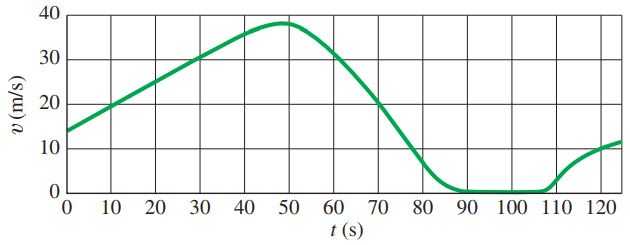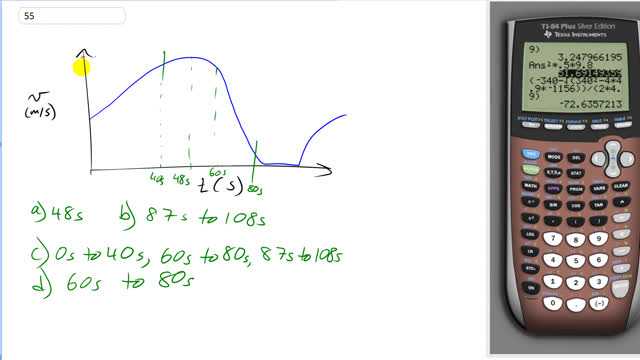
Figure 2-42 shows the velocity of a train as a function of time.
- At what time was its velocity greatest?
- During what periods, if any, was the velocity constant?
- During what periods, if any, was the acceleration constant?
- When was the magnitude of the acceleration greatest?

- 48s
- 87s to 108s
- 0s to 40s, 60s to 80s, 87s to 108s
- 60s to 80s

In order to watch this solution you need to have a subscription.
This is Giancoli Answers with Mr. Dychko. This is the velocity of a train versus time and the first question is at what time was the velocity greatest? Now each, you know, point on this y-axis is a velocity and so we're looking for just when the graph is at the highest point and that looks like it's about here. And reading from the numbers in the figure in the textbook, it looks like it happens at about 48 seconds. And in part (b), during what periods of any was the velocity constant and so we are looking for periods of time when this graph is horizontal and so it's expressing the same velocity for multiple times and that happens from about here to here; the velocity is constant and it's zero it stopped and that's about 87 to 108 seconds or so. And then part (c), during what periods, if any, was the acceleration constant? So acceleration is given by the slope of this graph it's the change in velocity over change in time and so this portion here looks like its constant and this portion here looks like it's about constant and also here when there's no acceleration at all it's also constant. And so that's from about 0 to 40 seconds, after about 40 seconds, it starts to curve and so it's not a straight line anymore and between 60 and 80 seconds, it's a straight line and between about 87 to 108, it's a straight line. And then when is the magnitude of acceleration greatest and so when was the magnitude of the slope greatest is another way to ask that question and just to make it clear why acceleration is given by the slope; if we take this line here say and slope is the change in y over the change in x and the change in y is some v final here say minus some v initial so v final minus v initial and that's divided by the change in x which is time's here so that's time final minus times initial and this is acceleration, you know, acceleration is defined as the change in velocity divided by change in time. So acceleration will be greatest here and it's asking for the magnitude of the acceleration and so the fact that it's negative here is not relevant and there we go that's from about 60 to 80 seconds.